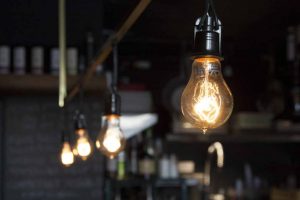Applying for a patent
In the U.S. requires that the patent application must be directed towards patentable subject matter and that it be Useful, New and Non-Obvious.
Patentable Subject Matter

When applying for a patent, the invention should be novel and non-obvious.
To be patentable, the subject matter of the invention should be directed towards a new and useful process, machine, manufacture, or composition of matter, or related to any new and useful improvement of the same. The scope of the patent cannot be directed towards an abstract ideas, mathematical formula, laws of nature or natural phenomena. Historically, this wasn’t difficult. However, recently this has become an issue with software related patents, business methods or in some cases, some medical processes or medical testing patents. Patent applications for most mechanical and electrical inventions dont have a significant issue. For some process, software and computer related inventions, this is can be an issue and care should be taken when drafting the patent application to direct the application towards the patentable aspects while avoiding the unpatentable abstract ideas.
Generally, if the invention is directed towards an algorithm it may be considered an abstract idea and not qualify as patentable subject matter. If the invention is considered to be a computer-implemented business process which was previously carried out mentally, the addition of a computer will not convert it to a patentable subject matter. In addition, many patents in the medical and life sciences area have become difficult to obtain recently because the courts and patent office indicated that they believe some to be directed towards prohibited subject matter, namely laws of nature and natural phenomena. This would also apply in some DNA or biotech related inventions.
Usefulness
A patent can only cover a useful item. Because the patent office has a pretty low threshold for usefulness, most patent applications meet this requirement. Generally, if it has some benefit to the public, it is generally considered useful. This area become more of a problem when applying for a patent related to theoretically impossible inventions, like perpetual motion machines or in areas which the invention attempts to patent something which is speculative. This may become more of an issue when applying for a patent application involving chemical compounds. In addition, there are a few inventions which are generally not considered to be beneficial to the public. It is rare when this is the sole basis for a rejection. Overtime, some courts and inventors have looked at usefulness in terms of Operability, Beneficial Utility and Practical Utility. Again, this is generally not much of a hurdle to overcome and if it is, you should meet with an attorney to discuss your concerns.

Copyrights, Patents and Trademarks are Intellectual Property
Newness
When applying for a patent, you want to make sure your invention is new or novel. This means that the invention must be different from anything already known. For example, the invention can not be already the subject of a patent, a patent application, a printed article, book or otherwise known by others. When the subject matter of a patent application or a published article overlaps with the invention covered by the patent application, the reference is often referred to as prior art. Prior art is not limited to the United States, but could be something already known anywhere around the world prior to the effective date of the patent in question. This is often an issue and is one of the main reasons why inventors often conduct a patent search prior to filing a patent application.
Non-obviousness
In addition to being new and useful, the subject matter of a patent must be non-obvious. Unfortunately, what is obvious, isn’t so obvious. In some cases, it involves looking back and determining if the improvement is significant enough to warrant a patent or if the improvement was simply “common sense.” In other countries, this requirement is referred to as the ‘inventive step.’
Non-obviousness is often determined by comparing the invention as a whole with the prior art to evaluate whether the subject matter would have been obvious to a “person of ordinary skill in the art.” While novelty is based on a single prior art reference, non-obviousness is often indicated by combining multiple prior art references together.
Because we stand on the shoulders of giants, almost all inventions are a combination of prior patents or prior workings of others. An invention may be an improvement patent and as such, it is acceptable if some elements of the invention are already known. Therefore, when the USPTO rejects a patent for non-obviousness, they must do more than simply provide a laundry list of prior art references. In addition to finding a combination of prior art reference, the patent office must provide a rationale or reason for combining the prior art references. Non-obviousness is often the most difficult hurdle to overcome when attempting to obtain a patent.
If you have any questions or would like help applying for a patent application, please contact our office. We would be happy to speak with you about filing a patent application on your invention.
